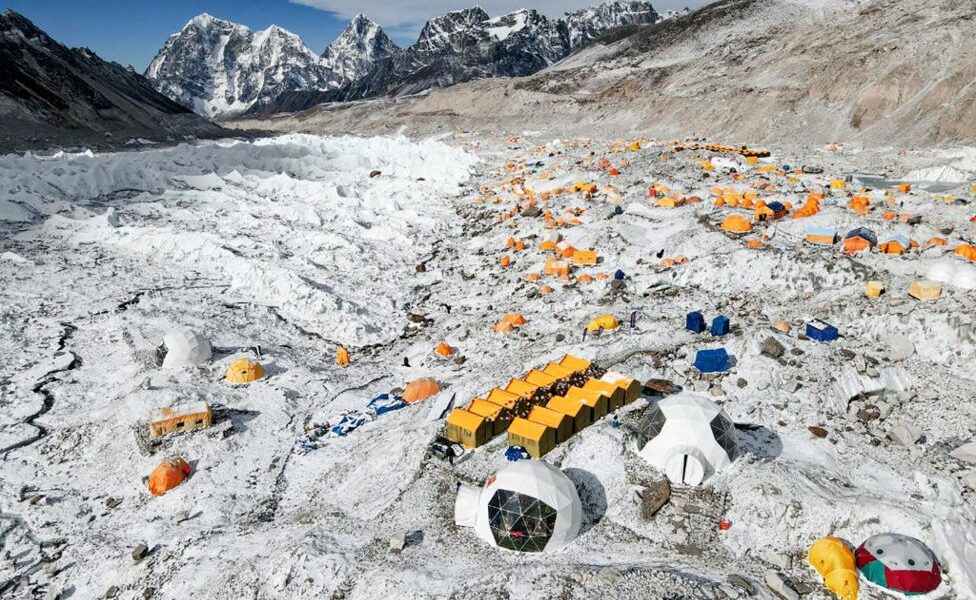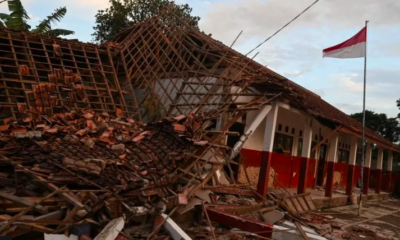
Nepal is preparing to move its Everest base camp because global warming and human activity are making it unsafe.
The camp, involved by up to 1,500 individuals in the spring climbing season, is arranged on the quickly diminishing Khumbu icy mass.Another site is to be found at a lower height, where there is no all year ice, an authority told the BBC.Scientists say liquefy water weakens the icy mass, and climbers say precipices are progressively showing up at headquarters while they rest.”We are currently getting ready for the migration and we will before long start conference with all partners,” Taranath Adhikari, chief general of Nepal’s travel industry division, told.”It is fundamentally about adjusting to the progressions we are seeing at the headquarters and it has become fundamental for the maintainability of the mountaineering industry itself.”The camp at present sits at a height of 5,364m. The upgraded one will be 200m to 400m lower, Mr Adhikari said.The plans follow the suggestions of a panel shaped by Nepal’s administration to work with and screen mountaineering in the Everest locale. The Khumbu icy mass, in the same way as other different ice sheets in the Himalayas, is quickly liquefying and diminishing following an Earth-wide temperature boost, researchers have found.A concentrate by scientists from Leeds University in 2018 showed that the glacial mass was losing 9.5 million cubic meters of water each year, and that the section near headquarters was diminishing at a pace of 1m each year.”We found that the diminishing pace of the ice at the headquarters region was higher than another pieces of the icy mass since it has a slim covering of rocks and stone garbage,” Scott Watson, one of the scientists, told the BBC.A large portion of the glacial mass is covered by this rough flotsam and jetsam, yet there are likewise areas of uncovered ice called ice bluffs, and the softening of the ice precipices most undermines the ice sheet, Mr Watson said.”At the point when ice bluffs liquefy that way, the trash of stone and shakes that are on the highest point of the ice precipices move and fall and afterward the dissolving additionally makes water bodies.”So we see expanded rock falls and development of dissolve water on the outer layer of the icy masses that can be dangerous.”Mountain climbers and the Nepali specialists say a stream squarely in the center of the headquarters has been growing step by step.They likewise say precipices and breaks on the outer layer of the glacial mass are showing up more every now and again than previously.”We shockingly see chasms showing up for the time being where we rest,” said Col Kishor Adhikari of the Nepali armed force, who was remaining at headquarters while driving a tidy up crusade throughout the spring climbing season, which endures from March to the furthest limit of May.”Toward the beginning of the day, large numbers of us have this chilling experience that we might have fallen into them in the evening. Breaks on the ground grow so frequently, it is very dangerous.”Tshering Tenzing Sherpa, Everest headquarters supervisor with the Sagarmatha Pollution Control Committee (SPCC), repeated that message.Noisy commotions could likewise habitually be heard, he expressed, brought about by the ice moving or shakes falling. He added that prior to setting up a tent at headquarters it was important to straighten the rough surface covering the ice, and to rehash this every once in a while as the glacial mass moved.”In the past the smoothed space used to swell up solely after half a month. However, now that happens consistently,” he said.A main individual from the council that suggested the headquarters move, Khimlal Gautam, said the presence of such countless individuals at headquarters was adding to the issue.”For example, we found that individuals pee around 4,000 liters at the headquarters consistently,” he said.”Furthermore, the enormous measure of fills like lamp fuel and gas we consume there for cooking and warming will affect the glacial mass’ ice.”Adrian Ballinger, pioneer behind mountain guide organization Alpenglow Expeditions, concurred that the move checked out, foreseeing that there will be more torrential slides, ice falls and rock falls in the space of the ongoing headquarters in future.”This ought to be unsuitable to undertaking pioneers, since it very well may be kept away from,” he said.The primary disadvantage was that a camp lower down the mountain would add to the length of the move from headquarters to camp one, the following organizing post for those getting over the mountain.Most climbers actually rise Everest from the Nepalese side, yet the numbers beginning in China are expanding.Mr Sherpa of the SPCC expressed that in spite of the issues, the current headquarters site was still basically steady, and could keep on filling its need for one more three to four years.Be that as it may, Nepali authorities say the move might occur by 2024.”We have surveyed the specialized and ecological parts of the headquarters, yet before we migrate it we should talk about this with nearby networks, taking into account different angles like their way of life,” said Mr Adhikari.”We will do it solely after talking about with all quarters.”





































































































































































































































































































































































































































































































































































































































































































































RSS